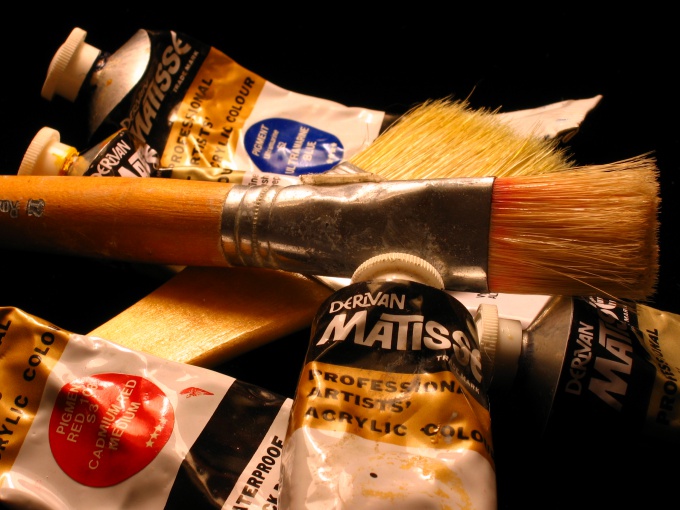You will need
- set of acrylic colors basic spectrum (6-8 colors), water, thinner for acrylic art brush (synthetic, kolinsky, sable, hog bristle), wet palette, a palette knife, the surface to be painted (canvas, thick watercolor paper, cardboard, wood, etc.), easel or tablet, masking tape, a stretcher for canvas.
Instruction
1
If you are familiar with watercolor or oil, it is easily mastered and acrylic paint. Just keep in mind that acrylic paints dry extremely quickly. If they're completely dry, they form a film which is not washed off with water. This means that you can change the picture only until the complete drying of acrylic paints. It is difficulty to mix them on a normal palette, and creates a need to keep the brush in the water. For acrylic paints sell special palette at the bottom of which is placed a moistened foam. The surface of the paint-mixing wax paper is laid over the wet foam. In addition, these palettes have a tight-fitting cover, which makes it quite long to keep mixed her paint. Very easy to make a moisturizing palette yourself, taking a flat container with a lid, the bottom of which you need to put a layer of wet wipes or toilet paper. The main thing - do not overdo it with water to the wipes didn't melt down. Rethrownew surface wipes, cover them with a sheet of smooth thick tracing paper, which will be the perfect palette for acrylic paints.
2
Whichever surface you choose for acrylic painting (except white watercolor paper, pre-primed. There is special primer for acrylic paints. Most often use acrylic emulsion, which includes titanium dioxide. This gives the surface a white, a need for a transparent acrylic paint. Also, the quality of the soil use dark acrylic paint, which gives the necessary contrast. If you decide to work with diluted acrylic paint, which will apply on white watercolor paper, you the ground is not required. The acrylic in this case will be very similar to watercolor, but without loss of color saturation.
3
Remember that acrylic the faster it dries, the more it adds water. It is easiest to draw the diluted acrylic paint technique "on-wet" when the sheet of watercolour paper previously wetted in warm water and stretched on the tablet. The edges of the wet paper tightly attach to your tablet masking tape. If you decide to write on dry paper with diluted acrylic paints, you moisturize it. It will be convenient to write with both hands: one to directly apply the paint, and the other (wet and clean) - smooth contours, remove islii paint, to soften color transitions and to correct errors. There's a technique acrylic painting, which is called stratified glaze. First, on the work surface to apply a thick paint as underpainting. Then the diluted liquid paint is applied in layers, waiting for the complete drying of each layer. This allows you to correct the dissonance of the colors or change the shades of the General color scheme of the picture. The painting, made by glaze, has an amazing depth, expressiveness and brilliance.
4
Excellent hiding power and density of undiluted acrylic paints allow you to write the technique of "impasto", as you would with oil. It is best to use drying retarders, manufactured specially for acrylic paints. This will allow without fuss to consider the texture of the brush strokes and to correct any errors, which, however, need to be corrected immediately. When working on canvas need it primed, and, given the transparency of the acrylic, it is better to post on it primary colors as a underpainting.
5
The brush, which you will work should be selected depending on how diluted acrylic paint. If you want to painting a diluted acrylic paints, brushes of sable, column, ox hair or synthetic. For impasto techniques (i.e. thick acrylic paint) will do more hard brush of bristle, sable or combined with synthetic fibre. In addition, in this case, you can use a spatula, like writing oil paintings.
6
To simplify the work with acrylic, produce a lot of supporting tools: thinners, retarders drying, glossy, matte and textured gels. Practicing in acrylic painting, you will be able in practice to study their properties and to evaluate the usefulness.
